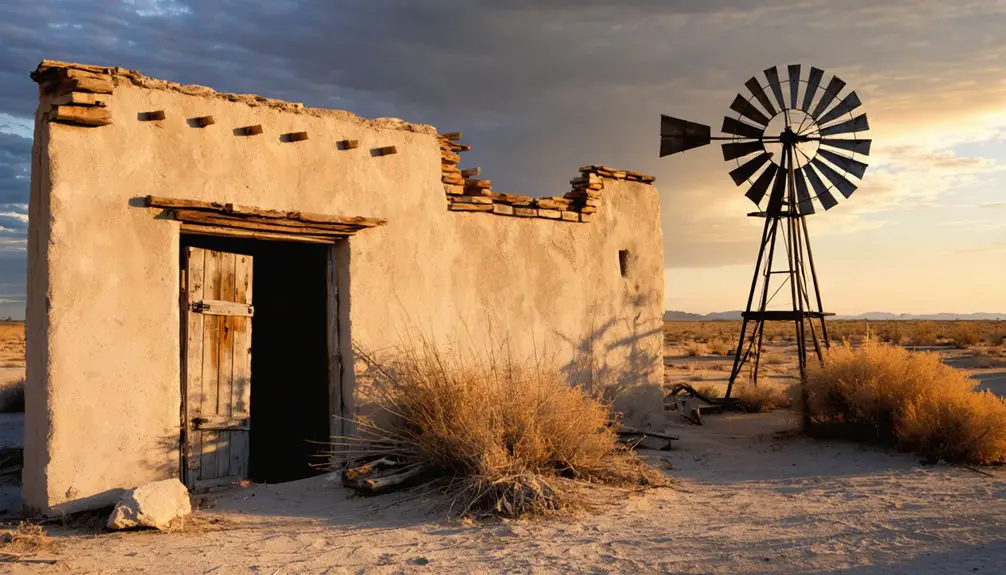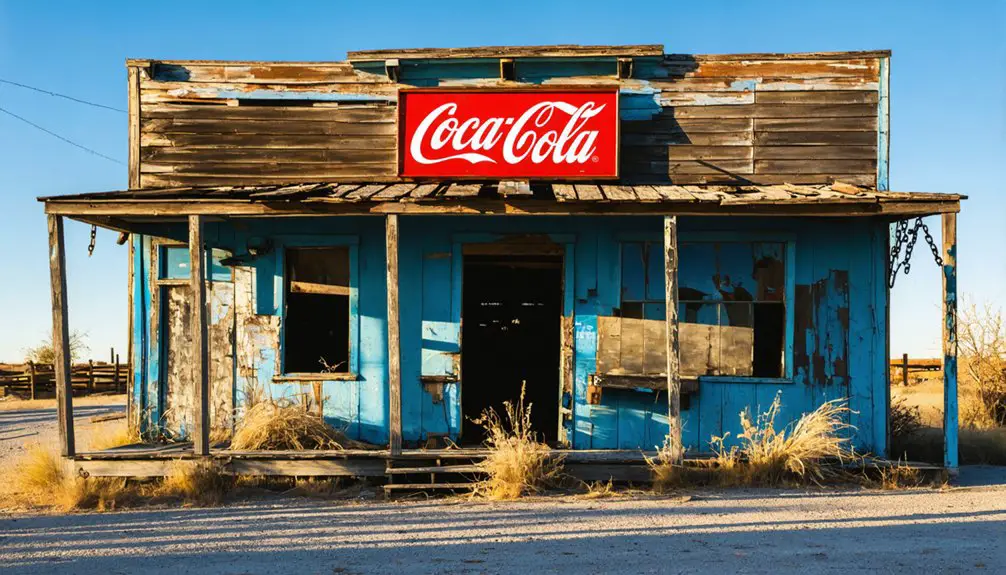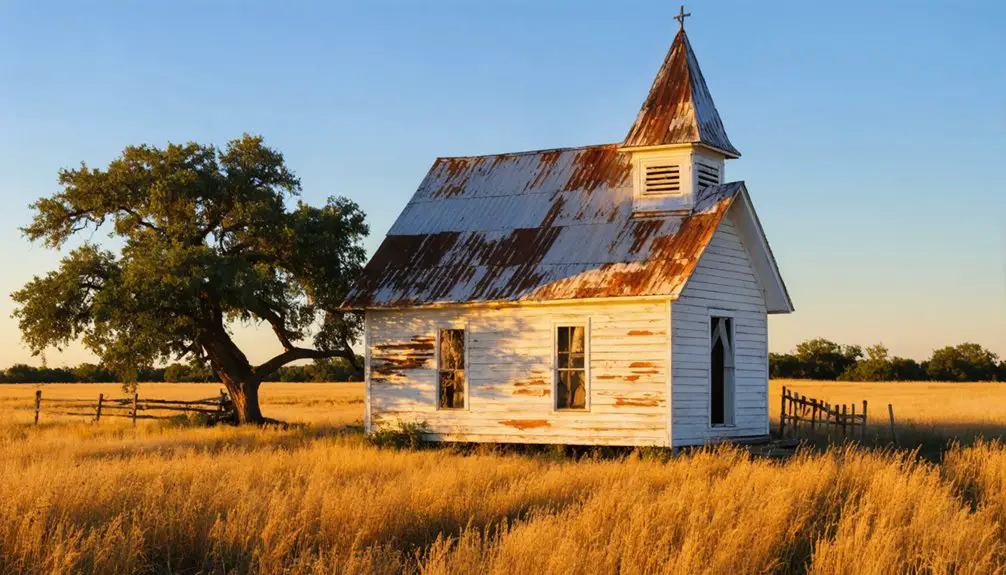Welcome to the lone star state, a place famous for its mineral reserves. Since the 19th century, the state has witnessed economic growth due to oil fields. Also, when we talk about ghost towns, Texas is the winner of all states. Admitted to the Union on December 29, 1845, as the 28th state, there is a vast history full of fascinating tales of a time long gone.
There are over 500 ghost towns in Texas. Every state county has at least one ghost town, with Wilson County leading with 34 ghost towns and coming in at second place Presidio with 16. Most of these towns perished due to economic factors.
It is no surprise that Texas has the most ghost towns since it is the largest state in the contiguous United States.
Terlingua, Texas
Terlingua is one of the five ghost towns located in Brewster County. It is located 460 miles away from San Antonio and shares its borders with Chihuahua, Mexico.
In the late 19th century, mercury was found here. Howard E. Perry, a lumberer from Ohio, owned more than 2500 acres of land in Texas and noticed a sudden interest in people trying to buy it from him. Later, he discovered cinnabar on his land, a mineral from which mercury can be extracted.
By 1903, at the age of 45, Perry decided to get a loan from the bank to establish his own mining company, the Chisos Mining Company. He didn’t know how to mine. But Perry valued people’s experience, which made him successful. He consulted with Dr. William Battle Phillips, who taught him the process of mining and turning cinnabar into mercury.
Terlingua was a thriving community with more than two thousand inhabitants within a decade. World War I impulsed Terlingua’s economic growth. The mine provided enough jobs, and the community had doctors, schools, and telecommunication services.
All the prosperity lasted for nearly three decades. By 1930, the downfall started. A series of unfortunate events occurred. The mine became a danger for the workers after several deaths were recorded. Additionally, the National Recovery Administration, an institution established under Franklin D. Roosevelt’s presidency, forced the Chisos Mining Company to raise the salaries it paid to the miners. At the time, the mine was not producing as it once did.
Since mining was the main economic activity, the town began to suffer once production declined. By 1942, Perry had to file for bankruptcy, as the mine was closed. The miners packed their things and moved out of Terlingua.
The town sat deserted for twenty-eight years until 1970 when people started to come back to live in Terlingua. It currently has a small population of 100+ inhabitants. Every year, Terlingua attracts tourists to the Chili Cook-Off competition to celebrate Dia de Los Muertos.
Dewees, Texas
Dewees is located in Wilson County, 40 miles away from San Antonio. Dewees was founded circa 1865 by the Dewees brothers. John O. Dewees convinced his father and brother to move to Texas to raise cattle.
By the late 1880s, the Dewees were successful cattlemen who moved more than 400,000 Texas longhorns to the northern market. The cattle production transformed Dewees, and by the beginning of the 20th century, it had a post office, a school, a mill, and a cemetery.
There is little information about what made this town fall into decline. However, we know that by 2000 the population was less than 50 people.
Grapetown, Texas
Grapetown is located in Gillespie County, 80 miles from Austin. Grapetown was founded in the late 1840s when Ferdinand Friedrich Wilhelm Doebbler and his wife moved from Berlin to Texas.
By 1859, Mr. Doebbler opened a school in his home. Within less than twenty years of their arrival, the couple established an Inn, a post office, and a store, contributing to the economic growth of Grapetown.
The economic boom occurred in the 1850s when many people decided to sell their cattle to supply beef for the US Army. By the beginning of the 20th century, Grapetown was part of the Fredericksburg railroad.
However, the economic stability didn’t last long. At the beginning of the 1930s, State Highway 87 was rerouted, negatively impacting the town’s economic activity. By 1978, the local school had around 20 students with around 150 inhabitants.
Thurber, Texas
Located in Erath county, Thurber is more than 110 miles away from Waco. Its closest city is Mingus, which is 2 miles away.
Thurber’s economic growth is related to mining, specifically coal mining. The Texas and Pacific Coal Company established a coal mining facility in the town. Operations started in the late 1880s and attracted people from around the world.
Thurber saw its peak at the beginning of the 20th century. The company provided fuel and bricks to the Texas and Pacific Railway trains. Additionally, the company had general stores to sell groceries, drugs, and many other products to the people of Thurber. At the time, more than 8000 people were living in the town.
However, the 1920s hit hard on the coal business. Most industries started to switch from coal to oil and fossil fuels. Unfortunately, Thurber was not part of the oil boom, and the mining company started its downfall. Now that railroads only needed oil, Thurber could have offered nothing.
By 1930, the town had more empty buildings than inhabitants. People fled because all workers formed a union that secured their jobs with the company. Once the company was out of town, the workers moved along.
Some buildings remain tourist attractions. It includes the St. Barbara Church and the W.K. Gordon Center.
Proffitt, Texas
Proffitt is part of Young County, located 100 miles from Fort Worth and 90 miles from Abilene.
The town was founded in 1862 by Robert Smith Proffitt and his family. By 1880, the small city already had a post office and a church. The main economic activity of Proffitt was farming and freighting business. However, the town never flourished.
At its peak, Proffitt had a population of fewer than 100 people. Due to its farming activity, the community struggled to get by during World War I.
Proffitt’s cemetery remains a tourist attraction where you can find the graves of many children who unfortunately died at the beginning of the 20th century.
Hedwigs Hill, Texas
Located in Mason county, Hedwigs is 100 miles from Austin and 30 miles from Fredericksburg.
Hedwig’s Hill was founded in 1853 by Christopher Voges and Ludwig Martin. The two men were German descendants and traveled to Texas with a group of people wanting to establish a German colony in the area.
In five years, the town had its first post office. The primary economic activities were farming and freight businesses. By the beginning of the 20th century, Hedwigs Hill had added a community store and cotton, wool, and cattle business. Also, the town had a school and three churches.
All this wealth didn’t last long. Hedwig Hill lost most of its trade a few decades later when other local roads were established. The population was never more than ten for over three decades. Surprisingly, in the 1960s, the population increased to around sixty before dropping to ten in 2000.
There’s nothing left of what Hedwig Hill once was. Many roadrunners pass highway 87 without even noticing it is a ghost town.



